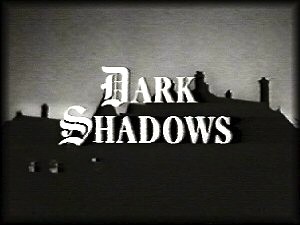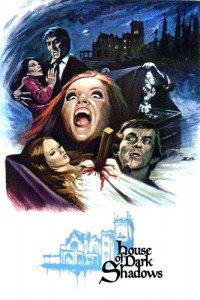Dark Shadows
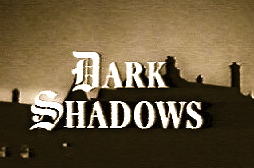
Dark Shadows
Dark Shadows Episode 1 in 3D, I upload this first episode on a different channel because youtube is showing the first 80 seconds as copyrighted so if they give me a strike it will not be on my main channel.
Dark Shadows is an American gothic soap opera that originally aired weekdays on the ABC television network, from June 27, 1966, to April 2, 1971. The series became hugely popular when vampire Barnabas Collins (Jonathan Frid) appeared a year into its run. Dark Shadows also featured werewolves, zombies, man-made monsters, witches, warlocks, time travel, and a parallel universe. A small company of actors each played many roles; indeed, as actors came and went, some characters were played by more than one actor. Major writers included Art Wallace, Ron Sproat, Malcolm Marmorstein, Sam Hall and Gordon Russell.
 Dark Shadows was distinguished by its vividly melodramatic performances, atmospheric interiors, memorable storylines, numerous dramatic plot twists, unusually adventurous music score, and broad and epic cosmos of characters and heroic adventures. It continues to enjoy an intense cult following.
Dark Shadows was distinguished by its vividly melodramatic performances, atmospheric interiors, memorable storylines, numerous dramatic plot twists, unusually adventurous music score, and broad and epic cosmos of characters and heroic adventures. It continues to enjoy an intense cult following.
Although the original series ran for only five years, its scheduling as a daily daytime drama allowed it to amass more single episodes during its run (1,225) than most other science-fiction/fantasy genre series produced for English-language television, including Doctor Who and the entire Star Trek television franchise.
In 2004 and 2007, Dark Shadows was ranked #19 and #23 on TV Guide’s Top Cult Shows Ever.
Since 2006, the series has continued as a series of audio dramas produced by Big Finish Productions, featuring many of the original cast, including David Selby, Lara Parker, and Kathryn Leigh Scott.
Creator Dan Curtis claimed he had a dream in 1965 of a mysterious young woman, who was on a train. The following day Curtis told his wife of the dream and pitched the idea as a TV show to ABC. Network officials greenlit production and Curtis began hiring crew members.
Art Wallace was hired to create a story from Curtis’s dream sequence. Wallace wrote the story bible Shadows on the Wall, the proposed title for the show, later changed to Dark Shadows. Robert Costello was added as a line producer, and Curtis took on the creator and executive producer roles. Lela Swift, John Sedgewick, and Henry Kaplan all agreed to be directors for the new series. Robert Cobert created the musical score and Sy Thomashoff designed the set.
Curtis then set out to find the actress to play the girl on the train. Alexandra Moltke, a young actress with little experience, was discovered and cast in the role of Victoria Winters, an orphan who ends up in the mysterious town of Collinsport, Maine, to unravel the mysteries of her past.
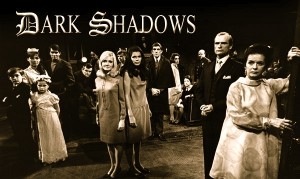 Veteran film star Joan Bennett was soon cast as Victoria’s employer Elizabeth Collins Stoddard, a woman who had not left her home in over eighteen years. Stage actor Louis Edmonds was cast as Elizabeth’s brother Roger Collins. Another stage actress, Nancy Barrett, was then cast as Elizabeth’s head-strong daughter Carolyn Stoddard, and child actor David Henesy was cast as Roger’s troubled son David Collins.
Veteran film star Joan Bennett was soon cast as Victoria’s employer Elizabeth Collins Stoddard, a woman who had not left her home in over eighteen years. Stage actor Louis Edmonds was cast as Elizabeth’s brother Roger Collins. Another stage actress, Nancy Barrett, was then cast as Elizabeth’s head-strong daughter Carolyn Stoddard, and child actor David Henesy was cast as Roger’s troubled son David Collins.
Dark Shadows had a rocky beginning. Critics were quick to deem the show rather boring for its heavy use of unknown actress Alexandra Moltke and the slow progression of the show’s legacy. The earliest episodes consisted of introducing the troubled characters and did not show any of the supernatural elements that later made the show a hit.
As production on the series continued, the introduction of many new and mysterious characters and various unknown actors and actresses was prevalent on the set. Most actors also ended up playing multiple characters, and those same characters would often come back from the dead in the unprecedented use of parallel times and flashbacks.
Broadcast History
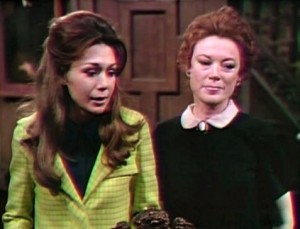 Perhaps one of ABC’s first truly popular daytime shows, along with the game show Let’s Make a Deal, Dark Shadows found its demographic niche in teenagers coming home from school in time to watch the show at 4 p.m. Eastern / 3 p.m. Central, where it aired for almost all of its network run, the exception being a 15-month stretch between April 1967 and July 1968, when it aired a half hour earlier. Originally, it was aired in black-and-white, but the show went into color starting with the August 14, 1967 installment transmission. It became one of ABC’s first daytime shows to actually win its timeslot, leading to the demise of NBC’s original Match Game and Art Linkletter’s long-running House Party on CBS, both in 1969.
Perhaps one of ABC’s first truly popular daytime shows, along with the game show Let’s Make a Deal, Dark Shadows found its demographic niche in teenagers coming home from school in time to watch the show at 4 p.m. Eastern / 3 p.m. Central, where it aired for almost all of its network run, the exception being a 15-month stretch between April 1967 and July 1968, when it aired a half hour earlier. Originally, it was aired in black-and-white, but the show went into color starting with the August 14, 1967 installment transmission. It became one of ABC’s first daytime shows to actually win its timeslot, leading to the demise of NBC’s original Match Game and Art Linkletter’s long-running House Party on CBS, both in 1969.
The series reached its peak in popularity during a storyline set in the year 1897, broadcast from March 1969. By the end of May, Dark Shadows was ABC’s most popular soap, and by late 1969 it was reaching nearly 20,000,000 viewers (although more accurate records place the show having between 7 and 9 million viewers, and ranking 11th out of a total 15 daytime dramas in that time period). In November 1969, after nine months of some of Dark Shadows’ most intricate, intelligent storylines, an end came to the adventures in 1897. Now the writers were faced with a dilemma: with ratings at an all-time high, what could they do next to hold the audience? Their decision, a storyline known as “The Leviathans,” proved to be a thematic misstep for the show and one from which it never recovered. Fans tended to dislike the portrayal of Barnabas as the pawn of some greater power. They proved to be more interested in the archetypes of classic horror, the vampire, the witch, the werewolf than in off-camera suggestion. The launch of Somerset in March 1970, a much-ballyhooed spinoff of NBC’s Another World, also hurt the series considerably. The release of the film House of Dark Shadows in September of that year is also thought to have caused TV ratings to fall, perhaps because of parents who attended the film with their children and, seeing the amount of blood spilled across the screen, discouraged their children’s choice of television viewing material. Beginning in the fall of 1970, several ABC stations across the country dropped the show due to falling viewership. Within six months, ratings dropped from 7.3 to 5.3. Ironically, Nielsen ratings for March 1971, the last full month that Dark Shadows was on the air, revealed that viewership had risen in its final weeks.
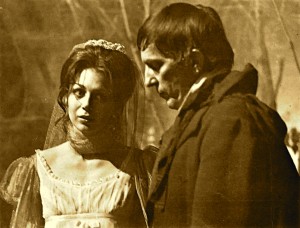 By early 1971, though, ABC was trying to cut costs in the face of harsh new economic realities including a national economic recession, a sharp dip in advertising revenue following the U.S. government’s recent ban on cigarette commercials, and a record-high number of competing soap operas—which were more expensive to produce than game or talk shows—on the networks’ daytime schedules. Thus, the network began weeding out supposedly unproductive programming. Despite its relatively high station clearances for its timeslot and low production costs, Dark Shadows fell victim to the purge mainly because of its young audience, who usually did not make decisions about the purchasing of household goods and food products for the family, which were the two chief industries that bought airtime on daytime television in that era. Practically no other daytime show skewed so much under the 18–35 demographic threshold as Dark Shadows did. Furthermore, primetime shows and movies with horror or science fiction themes (e.g., Star Trek, The Man from U.N.C.L.E.) had been on the decline for some time, and, of course, the serial appealed heavily to fanciers of those genres, people who usually didn’t express much interest in the often sentimental domestic or romantic themes on which traditional soaps had relied since their inception on radio in the 1930s. In addition and probably more decisively, the program experienced a precipitous drop in its ratings during its last two years on the air, falling from a peak of 8.4 in the 1968–1969 television season to a 5.3 in 1970–1971. Reflecting on the series’ cancellation, in an interview included in a 2005 DVD release, series creator Dan Curtis welcomed the show’s cancellation, feeling it had run out of fresh ideas: “I was just hoping it was going to end. I couldn’t squeeze my brain any harder to come up with just one more story. I just wanted to move on and out.”
By early 1971, though, ABC was trying to cut costs in the face of harsh new economic realities including a national economic recession, a sharp dip in advertising revenue following the U.S. government’s recent ban on cigarette commercials, and a record-high number of competing soap operas—which were more expensive to produce than game or talk shows—on the networks’ daytime schedules. Thus, the network began weeding out supposedly unproductive programming. Despite its relatively high station clearances for its timeslot and low production costs, Dark Shadows fell victim to the purge mainly because of its young audience, who usually did not make decisions about the purchasing of household goods and food products for the family, which were the two chief industries that bought airtime on daytime television in that era. Practically no other daytime show skewed so much under the 18–35 demographic threshold as Dark Shadows did. Furthermore, primetime shows and movies with horror or science fiction themes (e.g., Star Trek, The Man from U.N.C.L.E.) had been on the decline for some time, and, of course, the serial appealed heavily to fanciers of those genres, people who usually didn’t express much interest in the often sentimental domestic or romantic themes on which traditional soaps had relied since their inception on radio in the 1930s. In addition and probably more decisively, the program experienced a precipitous drop in its ratings during its last two years on the air, falling from a peak of 8.4 in the 1968–1969 television season to a 5.3 in 1970–1971. Reflecting on the series’ cancellation, in an interview included in a 2005 DVD release, series creator Dan Curtis welcomed the show’s cancellation, feeling it had run out of fresh ideas: “I was just hoping it was going to end. I couldn’t squeeze my brain any harder to come up with just one more story. I just wanted to move on and out.”
Despite many letters of protest from outraged fans, ABC canceled the five-year-old show on April 2, 1971, and replaced it with a new version of the hit 1960s game show Password. The rather abrupt ending of the series left some plotlines (such as Victoria Winters’ parentage, and the story of the Jennings family) unfinished, though most of the plot threads came to a happy conclusion, via a voiceover explaining future events in the final minute of the last episode.
The original cast reunited in 2003 for a special reunion play recorded for MPI, and in 2006 resumed production of Dark Shadows audio dramas for Big Finish (see below). These dramas have been ongoing for 10 seasons.
Preservation
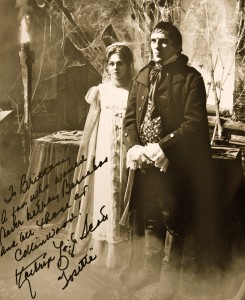 Dark Shadows has the distinction of being one of the few classic television soap operas to have all of its episodes survive intact except one, although a handful of early episodes are available only in 16 mm kinescope format. For the one lost episode (#1219), only a home audio recording exists. The home video version and cable reruns of this episode were reconstructed from a combination of this soundtrack, video still frames sourced from other episodes, and the closing and opening scenes from episodes #1218 and #1220 respectively.
Dark Shadows has the distinction of being one of the few classic television soap operas to have all of its episodes survive intact except one, although a handful of early episodes are available only in 16 mm kinescope format. For the one lost episode (#1219), only a home audio recording exists. The home video version and cable reruns of this episode were reconstructed from a combination of this soundtrack, video still frames sourced from other episodes, and the closing and opening scenes from episodes #1218 and #1220 respectively.
Syndication and Cable Repeats
Dark Shadows was to be syndicated by ABC’s distribution arm, ABC Films, as the series was ending in late 1970 and early 1971. However, delays kept the show from entering syndication, mainly because the FCC imposed Financial Interest and Syndication Rules, forcing the networks to sell off their syndication companies. Finally, in 1975, Worldvision Enterprises (spun off from ABC Films) released 130 episodes to syndication. Over the years, more episodes were released in varying quantities until the show finished its syndicated run in 1990. However, the first 209 shows and roughly the last year’s worth of shows were never seen in syndication. Dark Shadows was lucky to be in reruns at all; most daytime programs at the time were being destroyed in an effort to recycle the videotape, and those programs that survived were usually locked away without being seen again.
For many years, the show was rerun on Scifi, now known as Syfy. Unlike previous networks, Syfy had the entire run of 1,225 episodes to show. The network stopped airing Dark Shadows in December 2003, only two weeks short of completing the series. All 1,225 episodes in the series were shown at various times between 1992 and 2003.
Episode Numbering
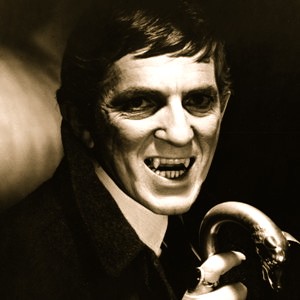 A total of 1,225 episodes were produced, but during the course of its run, the show was preempted 20 times. ABC would compensate for this by occasionally skipping, double numbering and, in one case, triple numbering episodes in order to keep a show ending in a 5 or 0 airing on Fridays. This is why the last episode produced has #1245 when in actuality it was only the 1,225th episode produced.
A total of 1,225 episodes were produced, but during the course of its run, the show was preempted 20 times. ABC would compensate for this by occasionally skipping, double numbering and, in one case, triple numbering episodes in order to keep a show ending in a 5 or 0 airing on Fridays. This is why the last episode produced has #1245 when in actuality it was only the 1,225th episode produced.
Storylines
Dark Shadows (televised storylines)
1966/7
Victoria Winters’ Parentage, episode 1 to 92.
Victoria Winters and her role as governess is inspired by title character in Charlotte Brontë’s gothic novel Jane Eyre.
Burke Devlin’s Revenge For His Manslaughter Conviction, episode 1 to 201.
Burke Devlin and his motivation for returning is reminiscent of Alexandre Dumas’ novel The Count of Monte Cristo.
Roger Collins’ Mysterious Car Crash, episode 13 to 32.
The Murder Of Bill Malloy, episode 46 to 126.
Laura Collins the Phoenix, episode 123 to 192.
Jason McGuire Blackmails Elizabeth Collins Stoddard, episode 193 to 275.
The Return Of The Vampire Barnabas Collins, episode 202 to 220.
The Kidnapping Of Maggie Evans, episode 221 to 261.
Julia Hoffman’s Attempt To Cure Barnabas, episode 265 to 351.
Barnabas Terrorizing Julia Hoffman, episode 352 to 365.
1795
Angelique Bouchard’s Vampire Curse On Barnabas, episode 366 to 426.
Victoria Winters’s Witchcraft Trial, episode 400 to 461.
The witchcraft trial involving Victoria Winters is inspired by Arthur Miller’s play The Crucible. Reverend Trask’s fate is inspired by Edgar Allan Poe’s short story “The Cask of Amontillado.”
Nathan Forbes’ Manipulation Of Millicent Collins, episode 419 to 460.
1968/9
The Mystery Of Jeff Clark, episode 461 to 665.
The Creation Of Adam, episode 466 to 636.
The character of Adam is inspired by Mary Shelley’s horror novel Frankenstein.
The Dream Curse, episode 477 to 548.
Elizabeth’s Fear Of Being Buried Alive, episode 513 to 672.
This storyline is inspired by Edgar Allan Poe’s short story “The Premature Burial.”
Nicholas Blair’s Scheme To Create A Master Race, episode 549 to 633/634.
Chris Jennings’ Werewolf Curse, episode 627 to 700.
The Ghosts Of Quentin Collins And Beth Chavez Haunt Collinwood, episode 639 to 700.
The character of Quentin Collins and his role is inspired by the Peter Quint in Henry James’s gothic novel The Turn of the Screw.

